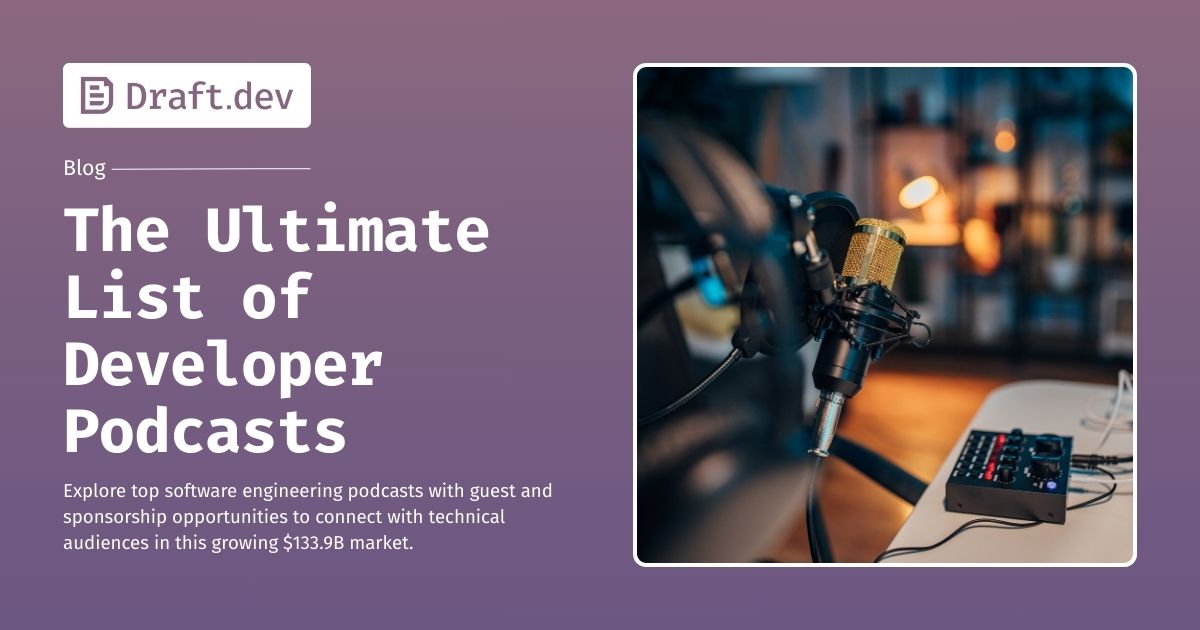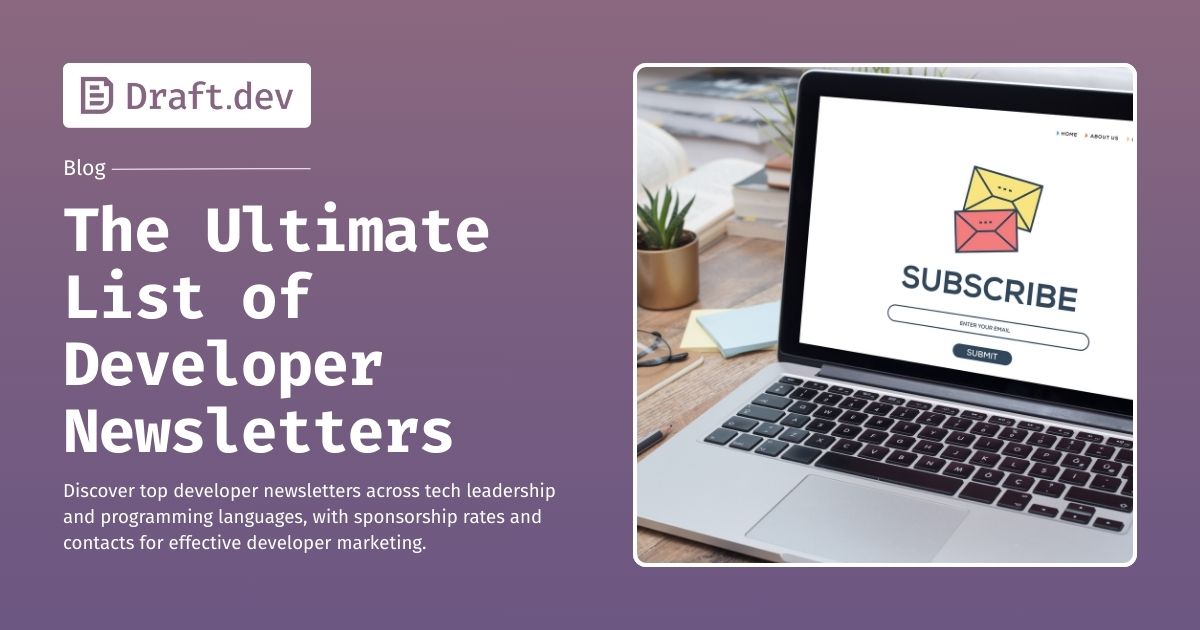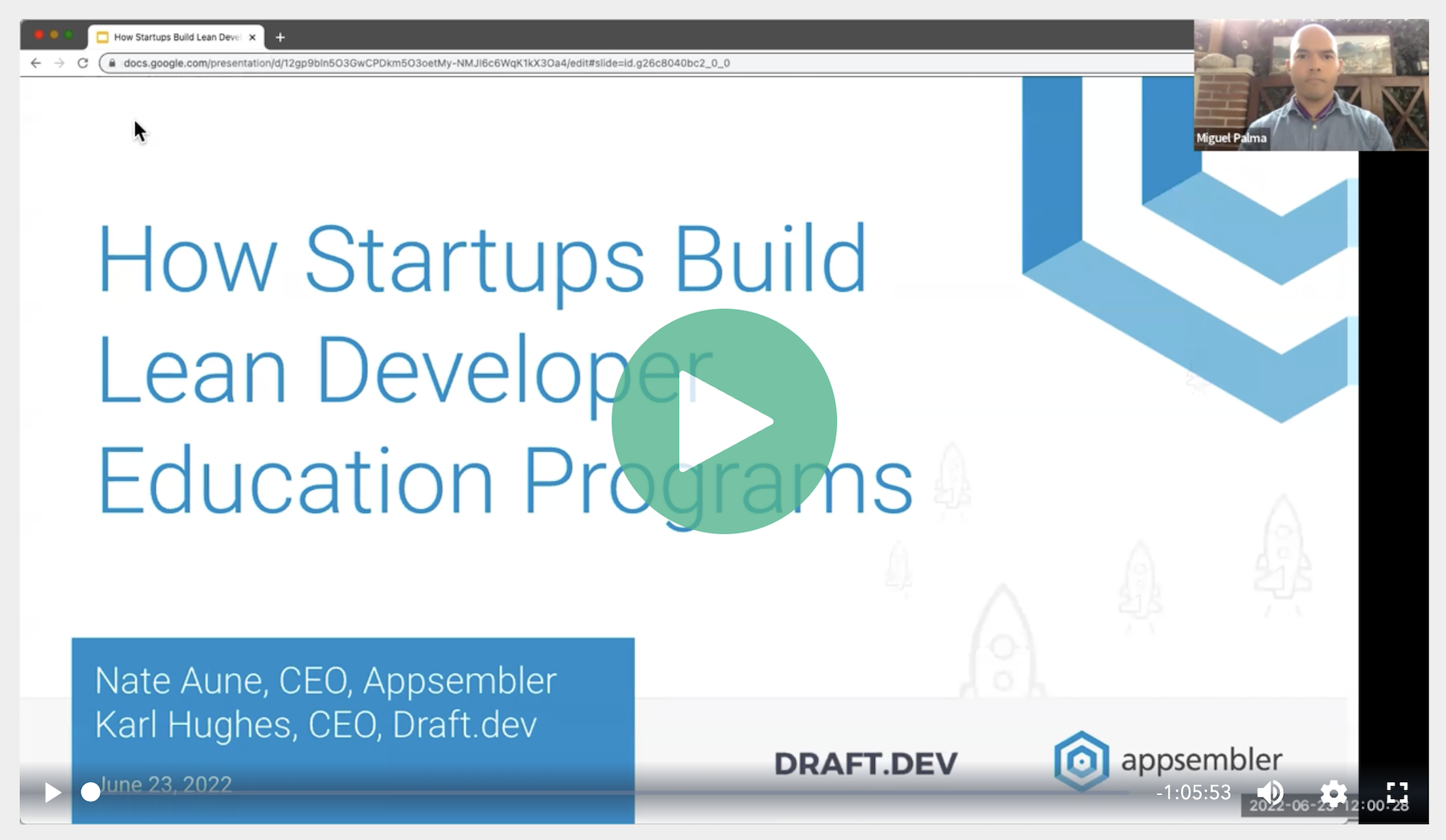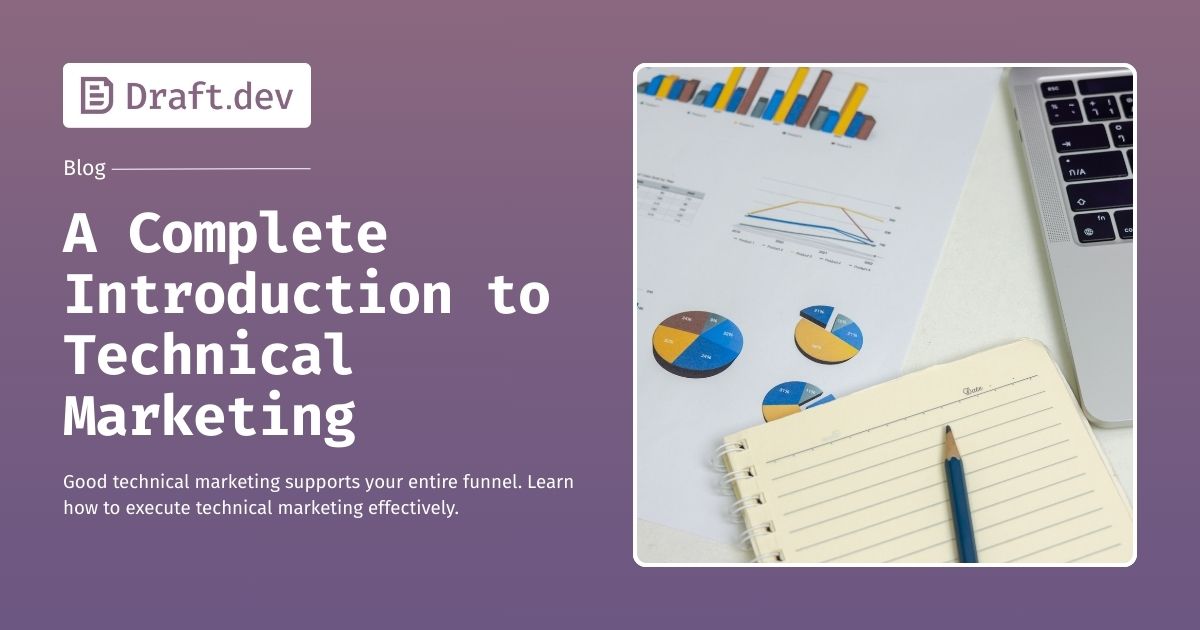Category: developer-marketing
-

Everything I’ve Learned About Devtools Marketing
Developer tools (often shortened “devtools”) are the unsung heroes of software development. Software engineers use them to streamline workflows, automate tedious tasks, and unlock new possibilities, but when it comes to marketing them, the path to success isn’t always straightforward. Since I started building Draft.dev a few years ago, I have worked with more than…
-

The Ultimate List of Developer Podcasts
Explore top software engineering podcasts with guest and sponsorship opportunities to connect with technical audiences in this growing market.
-

The Ultimate List of Developer Newsletters for 2025
Discover top developer newsletters across tech leadership and programming languages for effective developer marketing.
-

Developer Content Strategies That Work (and Scale)
We know that technical content is essential for attracting and engaging developers, but it can be challenging to create a strategy that works. This autumn, I ran a panel discussion at the Developer Marketing Summit 2023 in San Francisco, where I had the chance to chat with Victor Coisne, VP of Marketing, Strapi, and Ansley…
-

The Network Effect in DevRel: How Community-Centric Models Boost Software Adoption
Have you ever wondered why some companies seem to effortlessly dominate the market while others struggle to gain traction? For some, it comes down to the power of their community and the network effects they elicit. As Steve Jobs once said, ‘Innovation distinguishes between a leader and a follower,’ and in the world of software…
-

Open Source Development as a Marketing Tool
Software companies that embrace open source contributions strengthen their development efforts and supercharge their marketing. “In open source, we feel strongly that to really do something well, you have to get a lot of people involved.” – Linus Torvalds, Creator of Linux In this post, we’ll explore how developer tools companies can harness open source…
-

DevRel: Harnessing the Power of Community Feedback for Product Development
Product development is no longer a secluded process confined within the walls of a company’s headquarters. It has evolved into a dynamic and collaborative endeavor, with community feedback playing a pivotal role. Developer Relations, often abbreviated as DevRel, has emerged as a vital bridge between companies and their user communities. In this post, I’ll explore…
-

Product-Led Growth for Developer Tools Companies
Product-led growth is a relatively new term. It’s a strategy that puts the product at the center of all organizational initiatives. Companies focus on creating value for the end user in the hope that they become customers and champions of the product and drive growth for the business. Developers, in particular, are a unique group…
-

How to Build a Lean Developer Education Program (Appsembler Webinar Summary)
Developers are often hampered by the complexity of the tools they use. If they don’t understand the product they’re meant to be using, it doesn’t really matter how much easier it’s supposed to make their lives. Developer education programs are invaluable when it comes to empowering developers with knowledge about their tools and ensuring devs…
-

What is Developer Experience?
Developer experience (DX) is about improving the developers’ overall feelings toward tools or applications when building their own solutions. Good developer experience is reflected by how quickly a developer can build something new. Developers are happy when they can quickly build a solution, create new features, and improve their customers’ experience. DX has become a…
-

Syndicating Developer Content
One of the most common questions clients ask us about the developer-focused content we write is where they should publish and syndicate each piece of content. Should the content be published on their blog first? Or published somewhere with more organic reach like Medium or Dev.to? Will publishing on third-party platforms hurt SEO rankings? These…
-

Generating Content Ideas That Will Resonate With Software Developers
Learn how to balance thought leadership with other content types for a complete technical marketing strategy.
-

Great Technical Tutorials Address the “Why” and “How”
As tech advances, the content we produce about it should also evolve: demo videos, blogs, social posts — and yes, even tutorials. As straightforward as they may seem, tutorials hold a world of potential for building trust with your audience of developers. But finding people who know how to write a tutorial that consists of…
-

The Fundamentals of Speaking at Technology Conferences
If you’ve ever attended a tech conference — or any industry conference, for that matter — you probably have vivid memories of just one or two talks. The others most likely faded into the background along with the boozy cocktail hours and buzzy panel discussions. A great conference presentation doesn’t have to be a keynote;…
-

What is a Developer Advocate?
A few years ago, I started speaking at developer-focused conferences regularly. For me, it was a fun way to meet people, find new engineers to recruit, and share helpful information with the community, but along the way, I met my first developer advocates. As more businesses create tools, APIs, and services aimed at software developers,…
-

A Complete Introduction to Technical Marketing
Good technical marketing supports your entire funnel. Learn how to execute technical marketing effectively.
-

SEO Keyword Opportunities in Developer Marketing
We recently started supporting our clients at Draft.dev with keyword research which, given our unique position, has generated some exciting opportunities. We work with an array of clients, targeting different kinds of customers, in a hyper-defined niche: software development. Developer marketing is unique. It moves fast, and new terms are being popularized constantly. These factors,…
-

Hands on with Developer Marketing
Developers have a reputation of being averse to marketing, but that’s not necessarily true. Developers—like most savvy buyers—are averse to pushy, inept marketing, but with hundreds of thousands of software developers out there, it’s naive to speak about them in broad strokes on any topic. The truth is that developers are gaining more purchasing power…
-

6 Tips for B2D Marketing
Business-to-developer marketing (often shortened “B2D marketing”) describes marketing initiatives designed to reach software developers. As a former software developer, I can tell you that devs are a notoriously difficult group to market to. They’re tech-savvy, generally skeptical, and often use tools like adblockers to prevent popups and banner advertisements from reaching them. At the same…
-

The 3 Questions You Should Ask Before Starting a Technical Blog
The best technical blogs have a clear audience and defined goals. Today, I’m going to share the three questions I ask every client I work with at Draft: Q1: Why are you writing? I don’t know why I started writing. I don’t know why anybody does it. Maybe they’re bored, or failures at something else.…